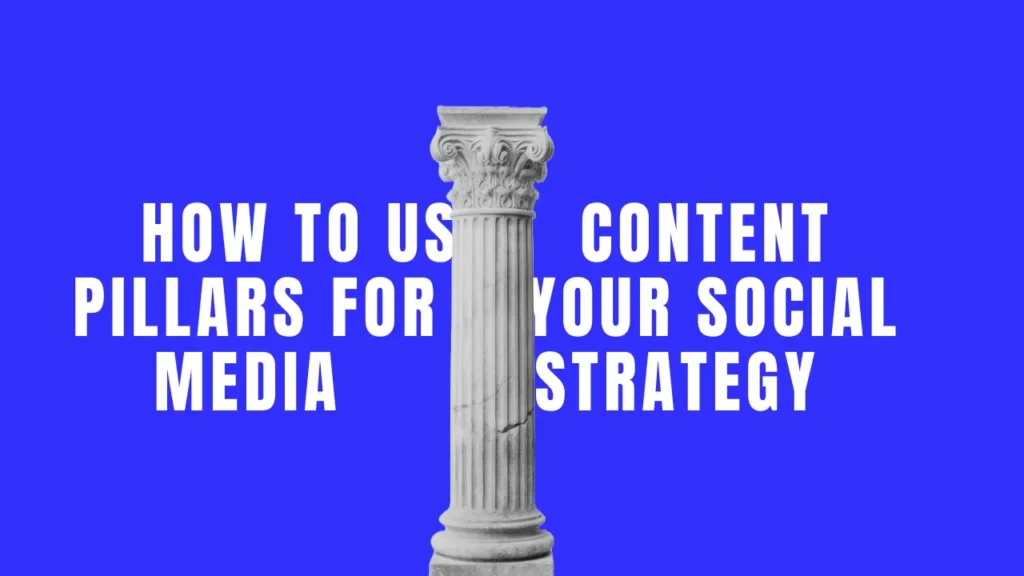How to Use Content Pillars for Your Social Media Strategy

In today’s fast-paced digital landscape, content is king—but without a clear strategy, even great content can get lost in the noise. Content pillars provide a framework for creating and organizing your social media posts, ensuring a consistent, engaging, and on-brand presence across platforms. In this guide, we’ll explain what content pillars are, why they’re essential for your social media strategy, and how to implement them effectively using proven tactics and tools like SocialBee.
For further insights on digital content strategy, check out HubSpot’s Marketing Blog.
What Are Social Media Content Pillars?
Content pillars are the core themes or topics that support your social media content strategy. They help you focus on what matters most to your brand and audience, ensuring every post reinforces your overall message.
Benefits of Content Pillars:
- Consistent Branding: Maintain a unified voice across all channels.
- Easier Content Planning: Streamline the brainstorming process by categorizing topics.
- Higher Engagement: Tailor your content to meet audience interests and current trends.
- Enhanced Creativity: Provide a structured framework to spark fresh ideas.
Learn more about establishing content pillars on Content Marketing Institute.
How to Implement Your Content Pillar Strategy
Step 1: Build a Content Bank for Each Pillar
- Identify Your Core Topics: Determine what your brand stands for and what your audience values. For example, a tech company might choose “Innovation,” “Education,” and “Community Events” as pillars.
- Gather Ideas: Create a content bank that includes written posts, images, videos, and infographics related to each pillar.
- Analyze Trends: Use tools like SocialBee to review audience demographics and trends across platforms. This data will guide your content creation process.
For more on content ideation, visit Neil Patel’s Guide to Content Marketing.
Step 2: Leverage Events to Enrich Your Pillars
- Incorporate Current Events: Align your content with relevant industry events or seasonal trends to keep your posts fresh and timely.
- Plan Ahead: Create content series or event-specific posts in your content calendar to build anticipation and engagement.
- Diverse Formats: Mix formats by using videos, reels, stories, or live sessions to cover events comprehensively.
Step 3: Engage with and Listen to Your Audience
- Social Monitoring: Use social media analytics and monitoring tools to understand what topics your audience cares about.
- Feedback Loop: Encourage feedback through comments, polls, and surveys to refine your content strategy.
- Adjust Accordingly: Regularly update your content bank based on audience interaction and emerging trends.
Step 4: Tie Your Content Pillars to Your Email Strategy
- Integrated Marketing: Align your email campaigns with your social media pillars to create a cohesive multichannel strategy.
- Content Repurposing: Use successful social media content to craft engaging email newsletters that drive traffic back to your website or social channels.
- Track Engagement: Analyze email performance alongside social media metrics to optimize your messaging across channels.
Step 5: Use Content Pillars for Diversification
- Mix Up Formats: Repurpose your core content into various formats—blog posts, infographics, videos, podcasts, or slide decks—to reach different segments of your audience.
- Extend Your Reach: Diversification not only keeps your content fresh but also helps cater to the consumption habits of users across different platforms.
Step 6: Monitor Your Analytics and Optimize
- Key Metrics: Track reach, engagement, traffic, and conversion rates for each content pillar.
- Data-Driven Decisions: Use analytics tools like Google Analytics and SocialBee’s dashboard to monitor performance and adjust your strategy.
- Regular Reviews: Schedule monthly or quarterly reviews of your content pillars to ensure they remain relevant and effective.
Learn more about optimizing your digital strategy with Google Analytics.
Step 7: Build a Winning Content Calendar
- Scheduling is Key: Use a social media content calendar to plan your posts in advance, ensuring that each content pillar is represented.
- Consistency: A well-planned calendar not only organizes your content but also builds a consistent brand presence.
- Automation Tools: Tools like SocialBee can help you schedule posts, track analytics, and manage multiple content categories effortlessly.
Outbound Link: For calendar templates and scheduling tips, visit Canva’s Social Media Templates.
Frequently Asked Questions (FAQ)
A: Content pillars are the main themes or topics that support your overall content strategy, ensuring consistency and relevance in your posts across various platforms.
A: The ideal number of content pillars varies by brand, but typically 3-5 pillars that align with your core values and audience interests are recommended.
A: Yes, but it’s important to tailor each pillar’s content to suit the unique audience and format of each platform.
A: Regular updates are essential—review your pillars at least quarterly and adjust based on performance data and emerging trends.
A: By aligning your email content with your social media pillars, you create a cohesive multichannel strategy that reinforces your brand message and boosts engagement.
Conclusion
Content pillars are a foundational element of a successful social media strategy. By organizing your content around clear themes, you can ensure consistent branding, drive higher engagement, and streamline your content planning process. Whether you’re building a content bank, leveraging events, or integrating your pillars with your email strategy, a well-implemented content pillar strategy can significantly boost your overall digital marketing efforts.
